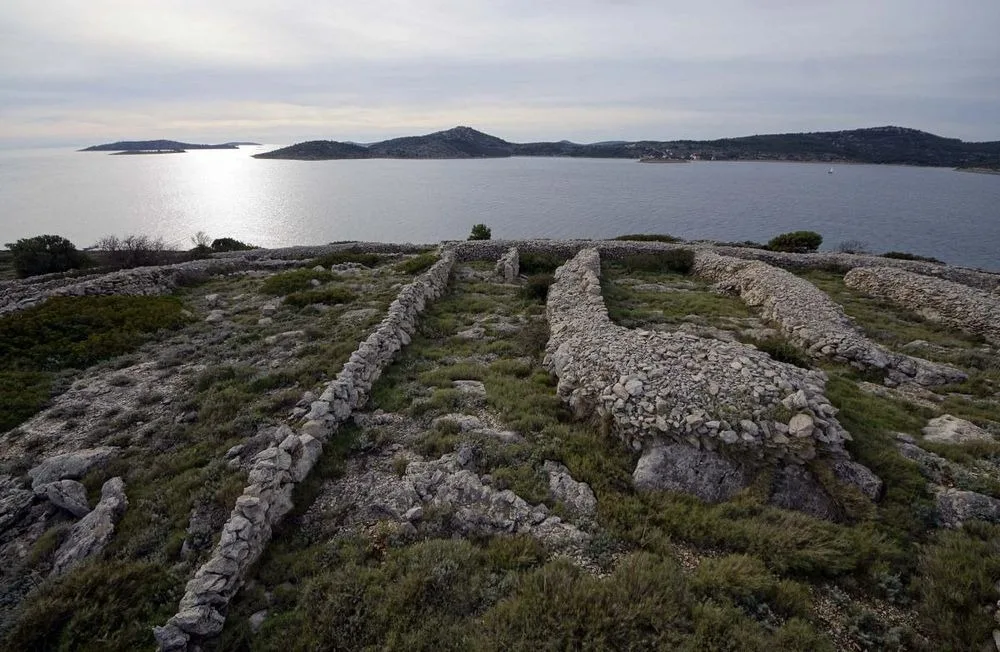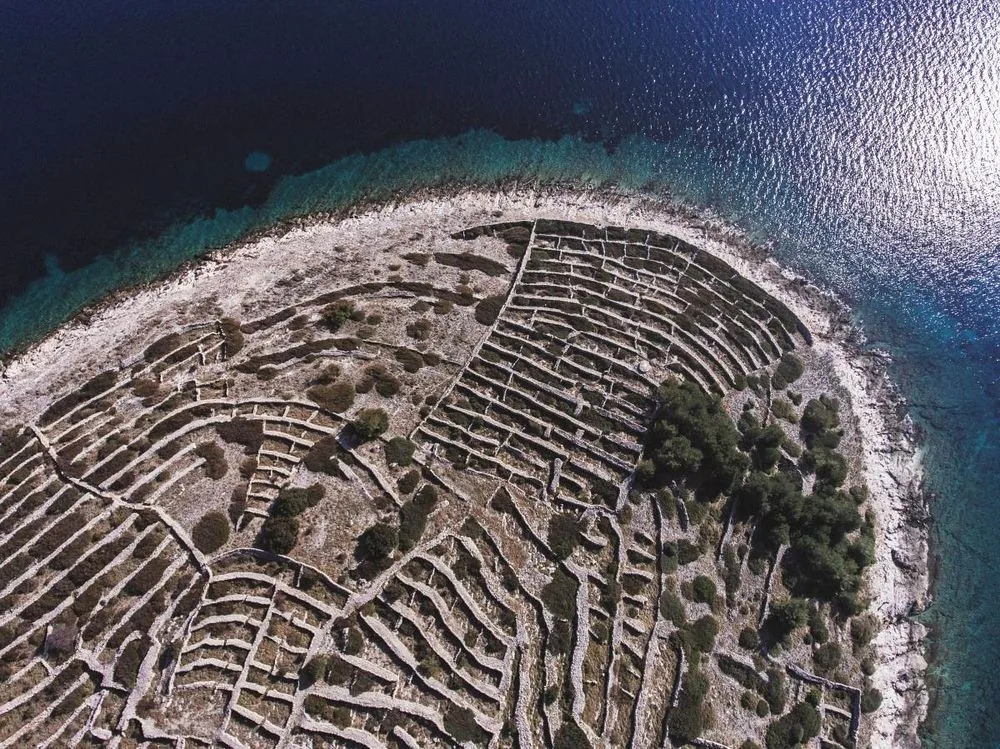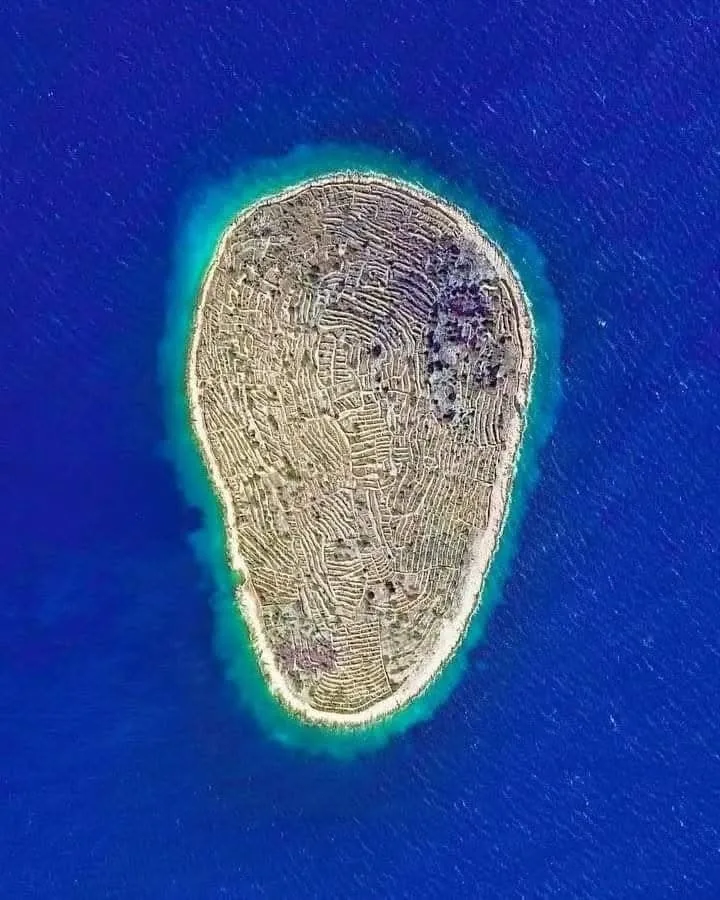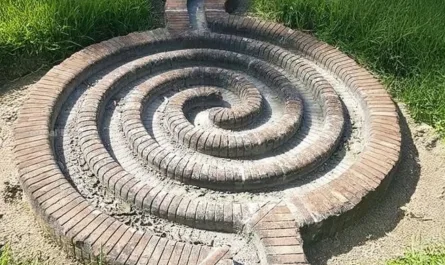Baljenac: Croatia’s Fingerprint Island Shaped by Ancient Stone Walls
Nestled in the Šibenik archipelago of Croatia lies Baljenac, a tiny, uninhabited island that has captured global fascination for its uncanny resemblance to a giant human fingerprint. Spanning just 0.14 square kilometers, this rocky outcrop is crisscrossed by an intricate network of stone walls that, if stretched end to end, would extend for an astonishing 23 kilometers (14 miles). Built in the 1800s by farmers from the nearby island of Kaprije, these walls are a testament to human ingenuity and the ancient craft of dry stone walling, transforming Baljenac into both a natural wonder and a cultural relic.

A Fingerprint Etched in Stone
From above, Baljenac’s maze-like pattern of stone walls creates a striking visual effect, mimicking the whorls and ridges of a fingerprint. This unique appearance, captured in aerial photographs, has earned the island nicknames like “Fingerprint Island” and a place on lists of the world’s most unusual natural formations. The walls, meticulously constructed without mortar, were built to serve practical purposes: to shield crops from the fierce Adriatic winds and to divide the land into manageable plots for farming.

In the 19th century, farmers from Kaprije braved the short boat journey to Baljenac to cultivate its rocky terrain. They cleared the island’s harsh, scrubby vegetation to plant fig and citrus trees, as well as grapevines, which thrived in the Mediterranean climate. The stone walls, typically waist-high, were essential for protecting these crops and organizing the land, creating a patchwork of small fields that maximized agricultural efficiency on the tiny island.

The Art of Dry Stone Walling
The walls of Baljenac are a masterpiece of dry stone walling, an ancient construction technique that relies on carefully selecting and interlocking stones without the use of mortar. This method, practiced for millennia across the Mediterranean and beyond, requires skill and precision to ensure stability. The stones, sourced directly from the island’s rocky surface, were stacked to create durable barriers that have withstood the elements for over two centuries.

Dry stone walling is not only functional but also sustainable, blending seamlessly with the natural landscape. In Croatia, this technique is a cherished cultural tradition, recognized by UNESCO in 2018 as part of the Intangible Cultural Heritage of Humanity. The walls of Baljenac exemplify this craft, their intricate patterns reflecting the labor and expertise of generations of farmers who transformed a barren island into arable land.
A Historical Snapshot Preserved
Today, Baljenac is uninhabited, its agricultural days largely a thing of the past. The island’s isolation and small size make it impractical for modern farming, but the stone walls remain as a striking reminder of its history. The absence of human activity has allowed the walls to stand largely untouched, preserved by the dry climate and the durability of their construction. Visitors to the Šibenik archipelago, particularly those exploring nearby Kaprije or the Kornati Islands, can catch glimpses of Baljenac’s unique landscape, though its remote location means it is primarily admired from afar or via aerial imagery.
The island’s fingerprint-like appearance has made it a point of interest for tourists, historians, and archaeologists alike. It serves as a living museum of traditional Croatian agricultural practices and a symbol of the resilience of rural communities in the face of challenging environments. The walls also highlight the ingenuity of farmers who adapted to the island’s rugged terrain, turning stone into both art and utility.
A Legacy for the Future
Baljenac’s stone walls are more than a curiosity; they offer lessons in sustainable land management and traditional craftsmanship. As modern agriculture grapples with environmental challenges, the principles of dry stone walling—resourcefulness, minimal environmental impact, and harmony with the landscape—remain relevant. Researchers and conservationists are studying such structures to inspire eco-friendly building techniques, while Croatia continues to promote its dry stone heritage as a point of national pride.
Baljenac, though small and uninhabited, stands as a powerful reminder of humanity’s ability to shape the land with care and creativity. Its fingerprint-like walls, etched into the Adriatic landscape, tell a story of hard work, ingenuity, and a deep connection to the earth—a legacy that continues to captivate and inspire.


